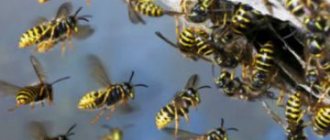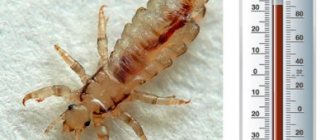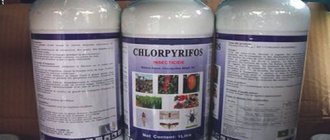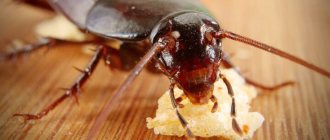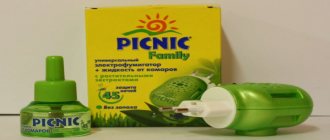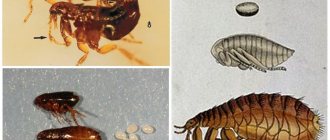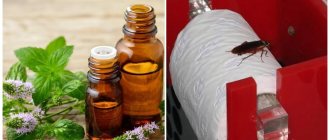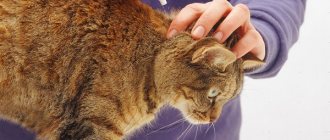Unfavorable environmental conditions
Fleas, like a number of other blood-sucking insects, prefer warm climates and try to find an appropriate host. For example, dogs and cats hide in shelters and live in houses, that is, they live in places where the parasite and its host can safely wait out the bad weather.
Unfavorable conditions force the flea to leave its owner or its habitat. The insect cannot tolerate heat, cold, or high humidity. All these factors can be used in the fight against the parasite.
A-a-a-a-a...
Are fleas afraid of water and sun?
A full bath for your pet solves the problem with insects, but only partly. Some parasites still survive. As a rule, young individuals and larvae drown, while the pupae, due to their structural strength and good adhesion, remain on the animal’s fur.
The insect does not tolerate direct sunlight. If the carrier spends most of his time basking in the sun on a fine summer day, then the parasites do not linger on such pets. In the warm season, these two factors can be combined: keep the animal in water, and then dry it in the sun.
For reference! The flea lays eggs not only on the fur of pets, but also on human clothing, as well as interior items. The parasite will die if carpets, pillows, bed linen, etc. are properly washed and dried naturally.
Temperature
Optimal climatic conditions for fleas are +25⁰С with a humidity level of 40-60%. Sharp temperature fluctuations negatively affect larvae and pupae. The latter may go into hibernation if the thermometer drops or rises to critical levels.
At temperatures above +35⁰C, insect eggs begin to dry out, and upon reaching the threshold of +45⁰C, adult individuals begin to die. To disinfect basements, outbuildings, apartments and interior items, it is enough to install a heat gun and let it work for several hours.
Fleas and frost also do not mix. As soon as the thermometer drops below 0⁰C, the parasite begins to experience severe discomfort. At -10⁰С the insect stops reproducing, and at -20⁰С it dies. In the winter months, fleas can be killed by cold: open the windows wide and leave the room for several hours.
Important! Disinfection by lowering the temperature is not suitable for pets and apartments. Pets will get hypothermic and get sick, and the paint in the house will crack, the wallpaper will peel off and the decorative trim will become unusable.
Natural enemies of fleas
Parasites can be killed by some types of fungal infections, while they coexist well with others and become their carriers. Natural enemies of fleas are ants and cockroaches. Red-headed individuals and a subspecies of pharaoh insects feed on parasite larvae and conflict with adult individuals regarding the division of territory.
Therefore, fleas do not take root in kitchens and other rooms where there is food for a cockroach or ant. Naturally, the decision to fight a blood-sucking parasite by increasing the population of other insects makes no sense.
What substances repel fleas
- The composition of well-known drugs (the same Dichlorvos, Karbofos and others) contains some compounds that are dangerous for fleas. Since they can be toxic to people and animals, these substances are usually used indoors;
- Insecticides pyrethroids and pyrethrins, which are low toxic to animals, are quite toxic to any insects, including fleas. Pyrethrins are considered natural components of plants, but pyrethroids are their synthetic analogues. Such substances include Etofenprox, Permethrin, etc., which are often found in FAS, Raptor, and also in some products for treating animal hair (for example, in flea collars, sprays and drops);
- Substances called imidacloprid and fipronil are insecticides of a newer generation; they are characterized by low toxicity to humans and animals. It is these substances that are usually used in safe but effective preparations and means for removing fleas from an animal (for example, in Hartz drops).
We suggest you read: The effect of a flea collar
Insecticides
Industrial chemicals are a surefire way to get rid of any insects. This is the only thing that fleas fear most in the house: you can hide from bad weather in the warm fur of the carrier, but there is no escape from the paralyzing effect of insecticides.
Popular industrial products for the home:
- Dichlorvos;
- Raptor;
- Karbofos;
- Butox 50;
- Raid.
Aerosols
Dog and cat fleas are afraid of drugs:
- Fiprist;
- Frontline;
- Dana;
- Advantix;
- Leopard;
- Barrier.
Most insecticides are used once. In advanced cases, re-treatment is carried out, but not more than once a month.
Important! After using aggressive chemicals, fleas die literally before our eyes. But this approach can harm your pet, becoming a catalyst for allergies. Therefore, you should consult your veterinarian before using medications.
The effectiveness of bleach against fleas
Bleach and household products that contain it destroy fleas with regular disinfection. In addition to treating surfaces (furniture, floors, walls), it is necessary to use a chlorine solution for washing trash cans, toilets and bedding for cats and dogs, rodent cages, door mats, and outdoor shoes.
A more effective result is achieved if, simultaneously with bleach, you use special insect repellents, for example, Dichlorvos.
Source
Repellent odors
Let's find out what smells fleas don't like. Some natural or chemical scents can repel the parasite or even kill it. But before filling your apartment with fragrant flowers and/or foul-smelling chemicals, it would be a good idea to check your household and pets for allergies.
Natural
Many flowers, herbs and trees emit pungent odors. The list of plants that can repel fleas is quite impressive, so choosing the best option should not be a problem. For greater efficiency, it is better to use freshly picked flora.
Among those that fleas are afraid of, we can recommend the following herbs:
- tansy;
- sagebrush;
- geranium;
- mint;
- lavender;
- thyme;
- anise.
Plants are effective for a day or two, after which they need to be replaced with new ones. Those herbs that repel fleas will be useless if the parasite is experiencing severe hunger, so in difficult cases you should use other methods.
Chemical origin
A number of chemicals and construction products emit very unpleasant odors, not only for insects, but also for humans. It is more advisable to use them outside the home: in outbuildings, open buildings, etc.
Paints
Fleas cannot tolerate odors:
- paints;
- cement;
- turpentine;
- fuels and lubricants;
- putties.
Important! In some pets, chemical odors provoke the development of bronchial spasms.
Therefore, this method must be used with extreme caution.
Natural enemies of fleas in nature
In nature, there are insects that instill fear in the blood-sucking parasites themselves. In particular, these are ants. But now the question arises: which of them is more unwelcome? This does not change the fact that if this natural enemy is in the house, fleas will definitely never appear. These parasites are also vulnerable to fungal infections, but their use is unsafe for human health and pets. In addition, there is something else that fleas are afraid of in cats , and these methods are much more effective and safer, we will get acquainted with them further in the text.
Folk remedies
Folk remedies are an alternative to aggressive chemistry. They are more accessible and for the most part do not cause allergic reactions. From what fleas are afraid of in an apartment and a private house, we will highlight the following remedies:
Kerosene
Direct contact with the substance immediately causes paralysis of the insect’s nervous system. Kerosene against fleas can be used locally: rub it on your pet and/or treat interior items and floors. One hour of exposure is more than enough to completely disinfect the room and pet.
Important! Kerosene emits a very unpleasant odor, which not every pet is willing to put up with. Therefore, for particularly restless animals, it is better to choose a different treatment method.
Bleaching powder
Fleas avoid contact with bleach. If you wash floors and other surfaces that are resistant to the active substance with it, the insect population will decline. You cannot treat upholstered furniture and other interior items made of fabric with bleach.
Herbs
Bunches of fresh herbs with a pungent odor (wormwood, thyme, yarrow) should be placed in the corners of the room, as well as near the place where the pet sleeps. You can bathe a cat or dog in a herbal decoction.
Garlic
In its original form, garlic does not help against fleas. It must be infused in boiling water (10-12 hours) or cooked in a water bath, and only then rubbed into the pet’s fur. In this case, it is necessary to ensure that the animal does not lick the grated mixture.
Garlic
Natural flavors
Most natural odors only have a deterrent effect. The use of fragrant plants and products does not destroy pests, but many aromas can become an obstacle to the path of fleas into the apartment. Brooms made from fragrant herbs, fumigators with essential oils, concentrated infusions and decoctions of strongly odorous plants are a pleasant and harmless way to combat parasites.
Tar
Tar soap has gained considerable popularity. This is an effective flea remedy. It is dissolved in water and used to wash animals and floors. Tar destroys adult fleas and their larvae.
Essential oil
Essential oils from the following plants have a strong repellent effect:
Water, high and low temperatures
What else don't fleas like? In order to live and reproduce, fleas need certain conditions, a suitable environment, and they almost always avoid leaving it, otherwise they simply will not survive.
First of all, they are afraid of the cold.
For most types of fleas, a temperature of 15 degrees below zero is too uncomfortable, and insects stop breeding altogether at -10 degrees. That is, along with toxic substances, they are also frightened by frost and cold, and therefore if the room is infested with parasites, you can try to freeze it out (it is recommended to do this regularly).
However, fleas are afraid not only of cold, but also of too high temperatures. Thus, cat fleas die at 45 degrees Celsius. Of course, your apartment is unlikely to maintain such a high temperature, but fleas are often destroyed using industrial fan heaters.
It will not hurt to know that fleas are afraid of water.
If your pet suffers from blood-sucking parasites and emergency baiting is impossible for some reason, then it is recommended to resort to regular bathing of the animal.
When swimming, insects try to get out and avoid getting into the water, but they are unlikely to be able to accomplish their plans.
Please note that there is no need to torture a cat or dog with cold or, conversely, hot water - you can bathe the animal in water of normal temperature.
